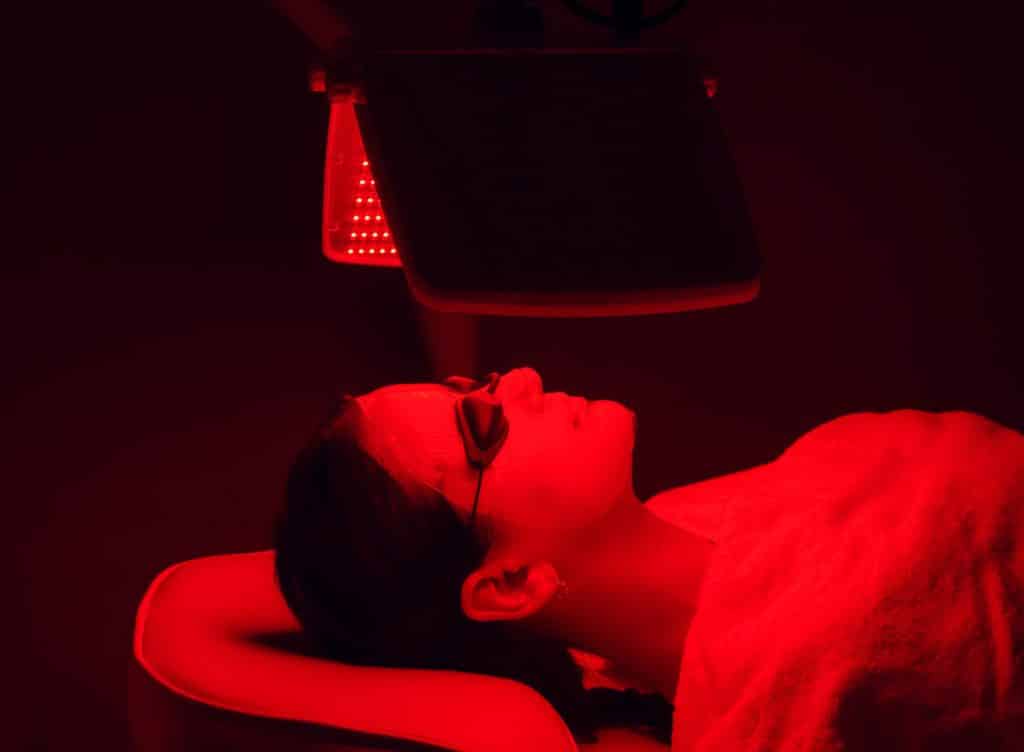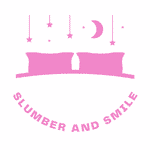Red LED lights do not interfere with the body’s circadian rhythym, so they are not bad for sleep in the same way that blue LED lights are. In fact, some forms of red light can actually be beneficial for sleep, and you can even benefit from red light therapy.
When it comes to getting better sleep, it turns out that not all light is created equal. According to sleep experts, exposure to blue light before bedtime can disrupt the body’s natural sleep rhythm, making it harder to fall asleep and stay asleep. So if you’re looking for a way to get a better night’s rest, you might want to consider investing in a red light bulb for your bedroom. Unlike blue light, red light does not disrupt the body’s natural sleep cycle, making it easier to drift off into a restful slumber. And if you’re worried about feeling like you’re sleeping in a dark cave, don’t be! Red light is actually quite easy on the eyes, so you’ll be able to sleep soundly without having to sacrifice any comfort. So if you’re looking for a way to get better sleep, consider swapping out your white light bulbs for some red LED lights. You’ll be glad you did!
Sleeping with red LED lights: Are red LED lights bad for sleep?
There’s a lot of conflicting information out there about whether or not sleeping with red LED lights is bad for your sleep. On the one hand, exposure to blue light before and during sleep can disrupt your natural sleep cycles, but on the other hand, red light can actually be very soothing and promote sleep. So which is it – is sleeping with red LED lights bad for you, or not?
Well, to answer that question, we need to look at the science behind it all. And fortunately, there are plenty of studies that have looked into this very topic.

Blue light is bad for sleep
A Harvard study found that exposure to blue light waves can suppress production of melatonin, a hormone that helps regulate your body’s natural sleep cycles. Participants in this study were exposed to either blue or green light for two hours before bed, and the researchers found that the blue light group had lower levels of melatonin than the green light group.
So based on these findings, it would seem like exposure to blue light before bed is bad for your sleep as it can disrupt the body’s internal clock through messing with the sleep hormone melatonin. But what about red light?
Read also: Is a Kindle OK to read before bed?
Red light is good for sleep
Interestingly, studies have shown that exposure to red LED light can actually decrease fatigue and aid muscle recovery. One study, published in the Journal of Athletic training, found that exposure to red LED light for thirty minutes before bed improved subjective sleep quality and reduced fatigue levels.
Another study, published in the Nature and Science of Sleep, found that exposure to red light before bed can decrease fatigue and improve daytime alertness. The study participants were exposed to red light for 90 minutes. The researchers found that the participants who were exsposed to the red light reported that they felt less sleepy and groggy after waking. They concluded that red light may help to prevent sleep inertia.
So based on all of this research, it seems like sleeping with red LED lights is actually better for you than sleeping with blue LED lights. Red light has been shown to reduce fatigue, improve sleep quality, and aid muscle recovery, while blue light has been shown to decrease fatigue and disrupt natural sleep cycles.
So if you’re looking for a way to improve your sleep, try sleeping with a red LED light. It may not be as disruptive to your sleep as blue light is, and it could help you feel more rested and refreshed in the morning.
How to use red light for sleep
There are many different ways to use red light for sleep, but the best and most effective way is to use a high quality red LED light bulb for 15-20 minutes each night before bed time. You can leave the red LED light on overnight.
Simply using red lightbulbs, although not harmful to sleep, won’t provide the same benefits as red LED lights. Red LED lights have been shown to be the most effective at helping people get a good night’s sleep.
If you want to use red light for sleep, here are a few tips:
1) Use the red LED light as your normal light in your room as you get ready for bed. If you like you can pair this with drinking one of our suggested best teas for sleep.
2) Do not stare straight at the light.
3) Make sure you get a high quality red LED light bulb.
4) Use the light for 15-20 minutes each night before bed time and to help you fall asleep.
5) You can also use the light overnight without it disturbing your sleep.
6) If you want to get the benefits from red light without the bulbs, you can also try using red light goggles to get the same effect.
Getting a good night’s sleep is essential for your health and well-being. Using red light at night can help you get the most out of your slumber and improve your overall health. Give it a try tonight!
Red light sleep therapy
If you’re looking for a way to improve your sleep, red light sleep therapy might be the answer. Red light wavelengths stimulate the production of melatonin, the naturally occurring hormone that helps regulate sleep. Additionally, using red LED lights before sleep can help by preventing the natural wake up signals of white and blue light.
What is red light therapy used for?
Red light therapy is becoming popular choice for skin issues such as wrinkles, scars and stretch marks. There is also some evidence to suggest that red light exposure may help with conditions such as alopecia, carpal tunnel syndrome, and even some forms of osteoarthritis.
What color LED light helps you sleep besides red
Different colors of LED light can be helpful for people trying to get a good night’s rest. Aside from red light, you can use orange, light yellow, pink, and other colors which are on the spectrum towards red. However, total darkness is often the best option if you don’t have a red light.
If you don’t feel comfortable sleeping in full darkness, using an orange or yellow LED light may be better bright light such as white light.
Why is blue light exposure bad for sleep?
It’s well-known that blue light exposure can have a negative impact on sleep. But why is this? blue light wavelengths are shorter than other colors on the visible light spectrum, and they contain more energy. When this blue light hits the retina, it signals the brain to stay awake. This is why blue light exposure is often said to be “stimulating.” And since blue light is increasingly prevalent in our lives – from the screens of our phones and computers to the energy-efficient bulbs in our homes – it’s no wonder that so many people find it difficult to get a good night’s sleep. To reduce blue light exposure and improve sleep, experts recommend avoiding screen time for at least an hour before bed, using blue light-blocking glasses, and installing an app that adjusts the color of your screen to match the time of day.
Best color night light for sleeping
Waking up in the middle of the night is never fun. You try to go back to sleep, but it’s just not happening. So, you reach for the nearest light source – your phone, a lamp, or a nightlight – and start scrolling through social media or reading a book. But did you know that the light you’re exposing yourself to could be making it harder for you to fall asleep?
Studies have shown that blue and green light can disrupt your circadian rhythm, making it harder for you to fall asleep and stay asleep. Red light, on the other hand, does not have the same effect. In fact, red light has been shown to actually improve sleep quality. So, if you’re looking for a better night’s sleep, try using a red LED light bulb instead of a blue or green one. You may be surprised by how well it works!
Our circadian rhythm is responsible for making us feel sleepy at night and energetic during the day. This natural biological process is regulated by special photosensitive cells in our retina, known as ipRGC’s. These cells are sensitive to different wavelengths or colors of light, which send signals to our brain telling us what time it is. According to a study at Ohio State University, it seems that this function is most sensitive to blue-green light, telling our brain that it’s daytime. So, if you’re struggling to sleep at night, it’s best to keep your bedroom dark and free from any light sources. However, if you do need to have a light on in your room, try using a red-light bulb instead of a blue or green one. Red light has been shown to have a minimal effect on our circadian rhythm and can even improve sleep quality!
You can also read our tips on which color LED lights promote sleep here.
Does sleeping with red lights cause nightmares
There is no scientific evidence to suggest that sleeping with red lights on will cause nightmares, and in fact it seems that red light is actually beneficial to sleep.
However, for some people the color red may trigger certain emotions that can lead to nightmares. Red is often associated with danger, violence, and blood. This may explain why some people report having nightmares after sleeping with a red light on. It is also worth noting that people are more likely to have nightmares when they are under stress or feeling anxious. So, if you’re already feeling on edge before bed, sleeping with a red light may make it more likely that you’ll have a bad dream. If you’re looking to avoid nightmares, it might be best to stick with dim orange or yellow lighting before bedtime.
Read also: Why do I get sleepy when I read?
Conclusion: Are red LED lights bad for sleep?
In conclusion, it seems that red LED lights are not as disruptive to sleep as blue lights. Red light has been shown to improve sleep quality, while blue light can disrupt the circadian rhythm. If you’re looking for a better night’s sleep, try using a red LED light bulb instead of a blue or green one. You may be surprised by how well it works!
